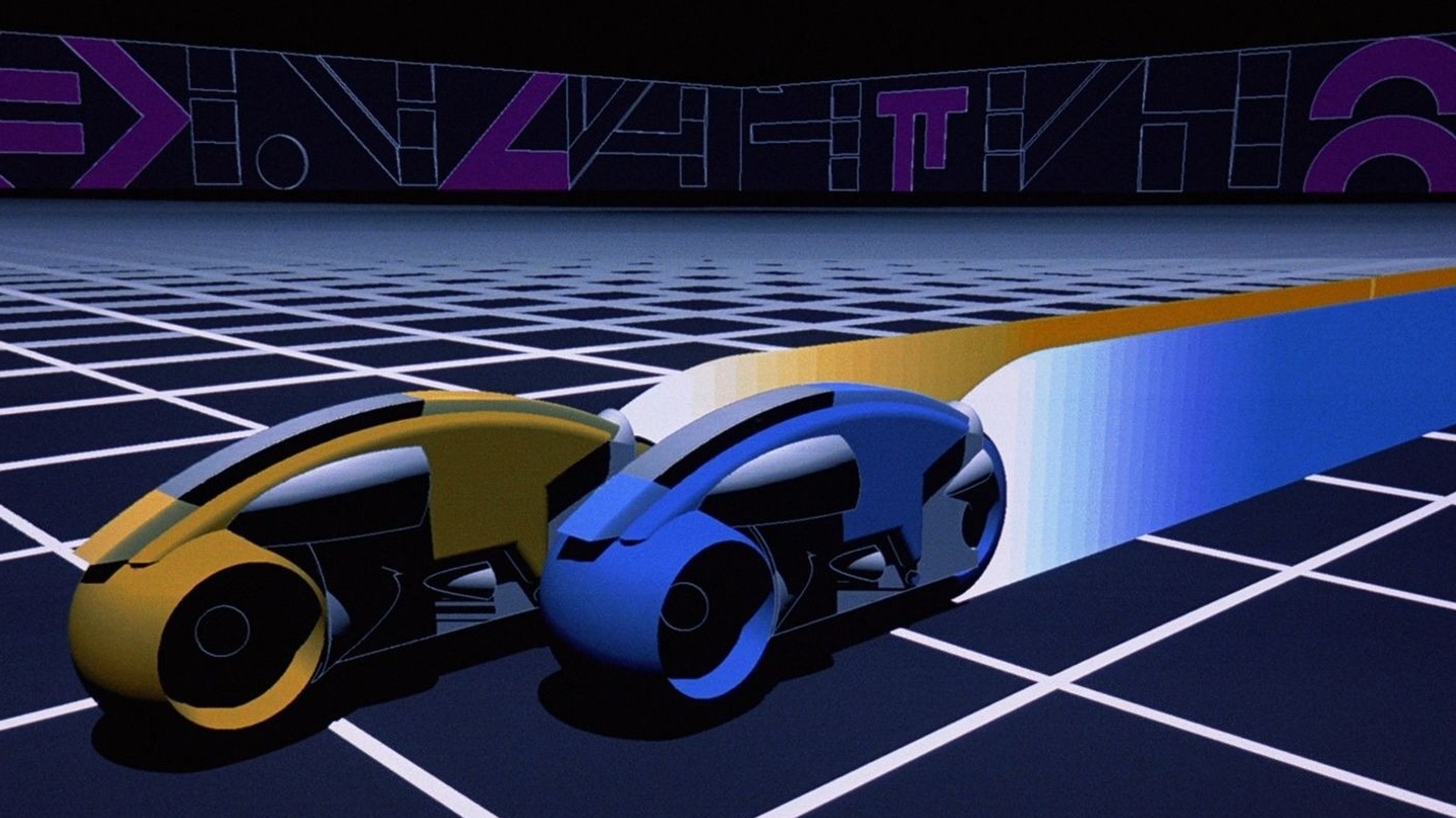
Back in the early 1980s, rendering CGI models in a computer was a much longer and more arduous process and, as one can see from “Tron,” produced relatively rudimentary visuals. The CGI images were constructed of clear polygons, and each object had to be rendered from multiple angles for every single frame of film. Then, once a visual was rendered, a camera had to photograph the computer screen (!), clicking each fully rendered image, laying them out one frame at a time. In many ways, this was carried out very much the same way one might make traditional cel animation. Instead of photographing a hand-painted image, however, it was the in-computer rendering.
When animating one frame at a time, however, one needed to be very, very meticulous about how those images needed to be laid out. Bill Kroyer was the head of computer animation on “Tron,” and he said the animation process involved a lot of geometry. Animators had to calculate out the actual 3D space before drawing out where a lightcycle might be in it, and nail the angles exactly. “We had to figure out how to position and render objects 24 times to make one second of perceived movement on the screen,” Kroyer said.
Once the animators calculated the angles and drew out the CGI images on paper, computer engineers would then come in an input all the calculations into their computer. A single image would presumably appear, and a camera could photograph it. A full sequence wouldn’t emerge until all the images were photographed and strung together, printed on a 35mm filmstrip, and projected. Only then would the filmmakers see how it looked.


Leave a Reply